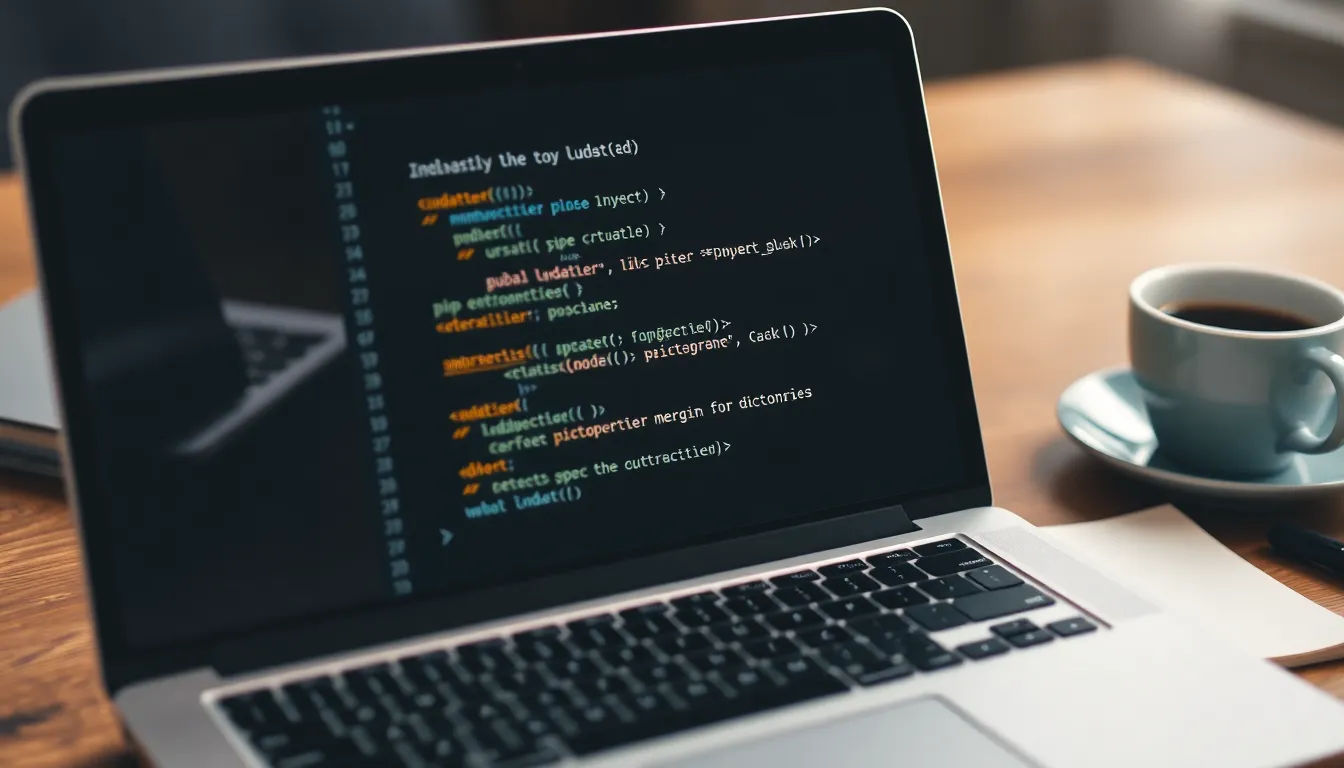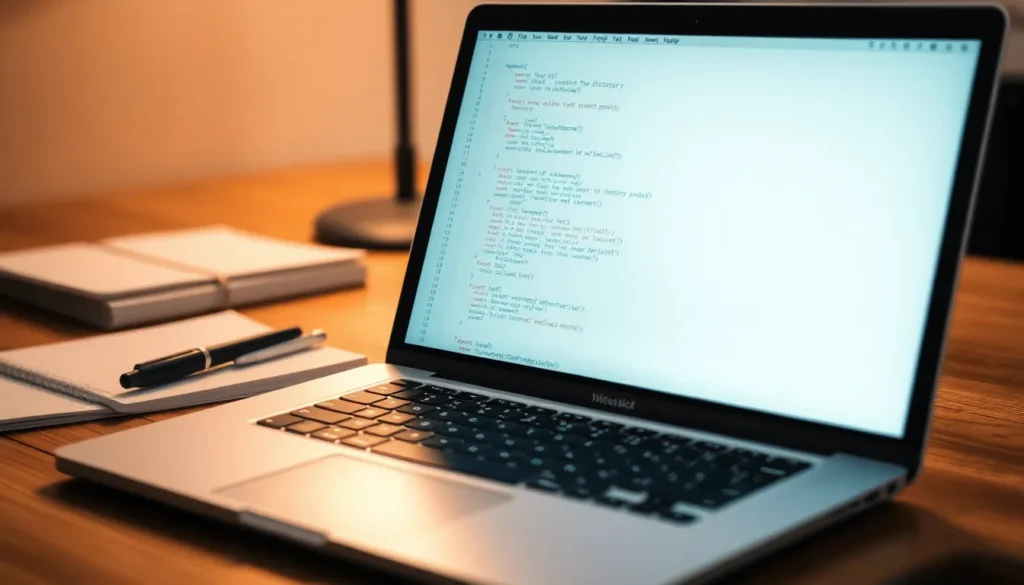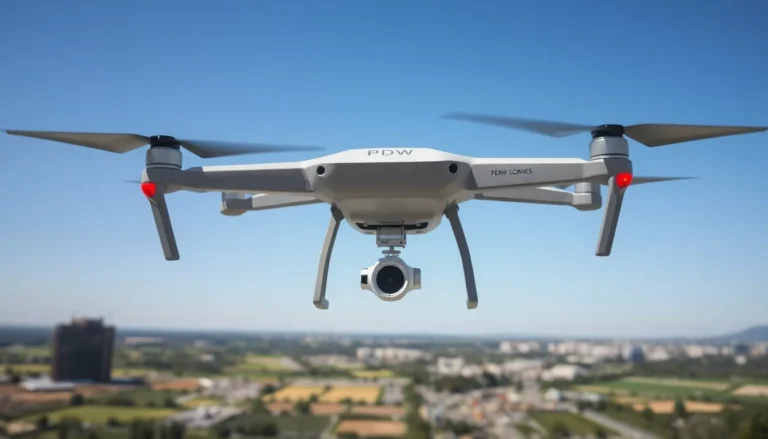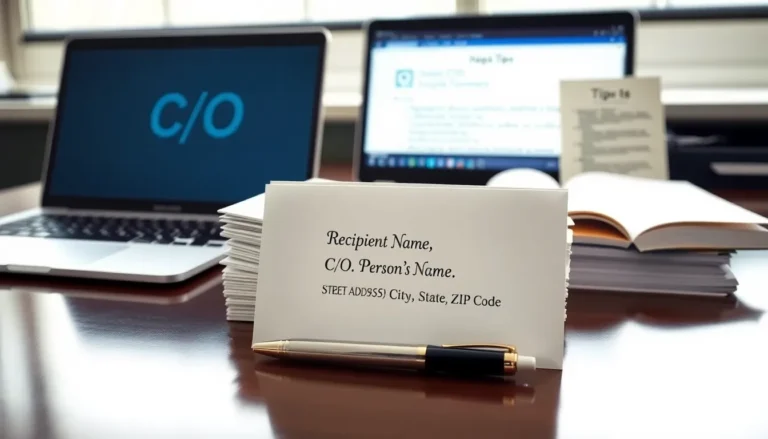In the world of Python programming, dictionaries are the unsung heroes, holding valuable data with the grace of a ballet dancer. But what happens when you need to update them? Fear not! Updating a dictionary in Python isn’t just easy; it’s more satisfying than finding an extra fry at the bottom of the bag.
Table of Contents
ToggleOverview of Python Dictionaries
Dictionaries in Python serve as versatile data structures, enabling developers to store and manage data efficiently. Each dictionary consists of key-value pairs, facilitating quick data retrieval. A key in a dictionary must be unique, while values can be duplicated, making it easy to associate multiple entries with a single identifier.
Dictionaries allow various data types as keys, including strings, integers, or tuples. This flexibility grants the ability to create complex data structures. Accessing or modifying values is straightforward, commonly achieved using square brackets or the get() method.
Updating a dictionary proves simple and intuitive. To add a new key-value pair, developers can assign a value to a new key. Existing entries can be modified by reassigning values to keys that already exist. Deletion of key-value pairs is similarly uncomplicated, accomplished with the del statement or the pop() method.
Python’s built-in methods enhance dictionary functionality. The update() method merges two dictionaries, making it efficient to incorporate changes in bulk. Iterating through dictionaries can yield keys, values, or both, which aids in data processing.
Overall, dictionaries are crucial for efficient data manipulation in Python programming. Their straightforward syntax and flexible capabilities support a wide range of applications, contributing significantly to Python’s popularity among developers.
Methods to Update a Dictionary

Updating a dictionary in Python can be accomplished through several practical methods, each offering unique advantages.
The Update() Method
The update() method allows developers to merge key-value pairs from one dictionary into another. It modifies the original dictionary in place, ensuring that existing keys are updated with new values. Syntax for using this method involves calling dict1.update(dict2), where dict1 is the target dictionary and dict2 contains new pairs. This method is efficient for bulk updates, especially when handling multiple key-value pairs at once. For example, using {'a': 1}.update({'b': 2, 'c': 3}) results in {'a': 1, 'b': 2, 'c': 3}.
Using the Pipe (
|
) Operator
The pipe operator (
|) simplifies dictionary merging in Python 3.9 and later. This operator enables a straightforward syntax for combining two dictionaries. For instance, dict1 | dict2 creates a new dictionary containing all unique keys from both dictionaries. If a key exists in both, the value from dict2 takes precedence. This method enhances readability and simplifies the merging process. An example would be `{‘x’: 10} |
{‘y’: 20, ‘x’: 30}, resulting in {‘x’: 30, ‘y’: 20}`.
Merging Dictionaries
Merging dictionaries in Python simplifies the data management process. Developers can choose from various methods to achieve this.
Merging with Update()
The update() method merges key-value pairs from one dictionary into another. When using it, existing keys in the target dictionary are updated with values from the source dictionary. If a key doesn’t exist, it gets added. This method modifies the original dictionary in place, maintaining efficiency. For example, consider two dictionaries: dict1 = {'a': 1, 'b': 2} and dict2 = {'b': 3, 'c': 4}. Using dict1.update(dict2) results in dict1 being {'a': 1, 'b': 3, 'c': 4}.
Merging with Dictionary Unpacking
Dictionary unpacking provides a compact syntax for merging dictionaries. Developers can utilize the ** operator to merge two or more dictionaries seamlessly. The syntax {**dict1, **dict2} can combine dictionaries while prioritizing key-value pairs from the latter dictionaries. For example, merging dict1 = {'a': 1} and dict2 = {'b': 2, 'a': 3} yields {'a': 3, 'b': 2}. This method, introduced in Python 3.5, enhances readability while performing dictionary merges effectively.
Best Practices for Updating Dictionaries
Updating dictionaries effectively enhances data management in Python. Prioritizing clarity helps maintain readability in code. Using the update() method is a common approach for adding or modifying entries within a dictionary. This method allows one dictionary’s key-value pairs to overwrite those of another, making it an essential tool for bulk updates.
Implementing dictionary unpacking can also streamline the merging process. With the ** operator, a developer can combine multiple dictionaries in a more concise way, ensuring later dictionaries take precedence. To illustrate, consider the following example:
dict1 = {'a': 1, 'b': 2}
dict2 = {'b': 3, 'c': 4}
merged_dict = {**dict1, **dict2}
In this case, merged_dict maintains b: 3 from dict2 since it arrives later. When updating values, it’s best to use meaningful keys to avoid confusion. Developers should refrain from using mutable types as keys, as this can lead to unexpected behavior.
Another practice involves utilizing the setdefault() method. This method adds a key with a specified value only if the key doesn’t already exist. This capability prevents overwriting existing values while allowing for default assignments.
When accessing nested dictionaries, employing the get() method is advisable. This method retrieves values safely and avoids key errors if a key isn’t present.
Developers should document dictionary updates thoroughly, especially in collaborative projects. Clear comments can clarify the intent behind changes, making it easier for others to understand the code.
Incorporating these best practices ensures efficient and effective dictionary updates, reinforcing data integrity throughout the development process.
Updating dictionaries in Python is an essential skill that every developer should master. With their ability to store and manage data efficiently, dictionaries play a vital role in various programming tasks. The straightforward methods for updating dictionaries not only enhance functionality but also promote cleaner and more readable code.
By utilizing techniques like the update() method and dictionary unpacking, developers can perform updates seamlessly. Adhering to best practices ensures clarity and prevents potential errors, especially in collaborative environments. Embracing these strategies empowers programmers to leverage the full potential of dictionaries, making them indispensable tools in the Python programming landscape.








